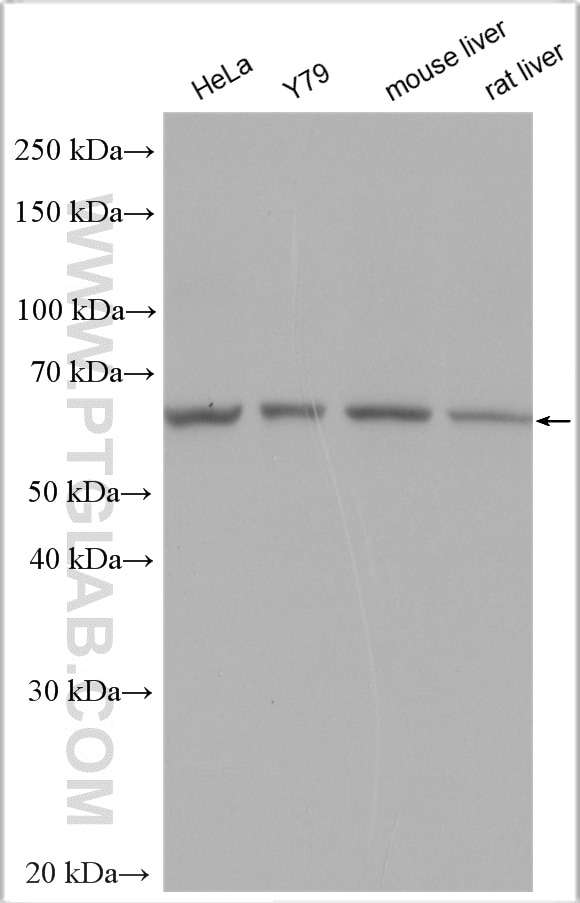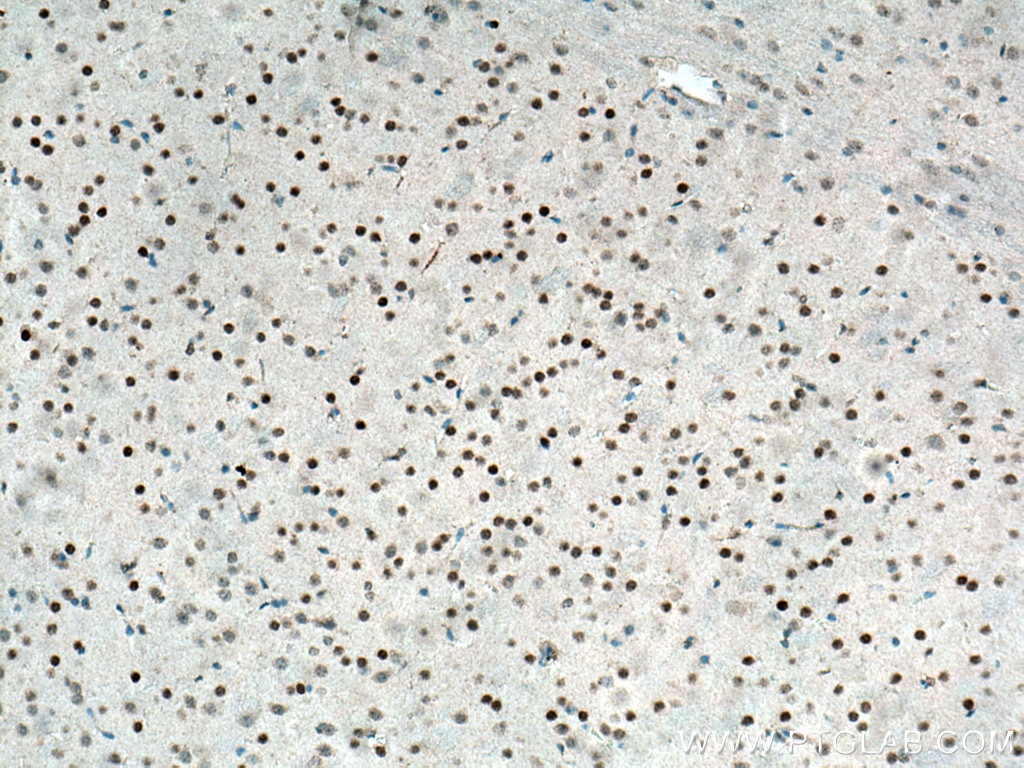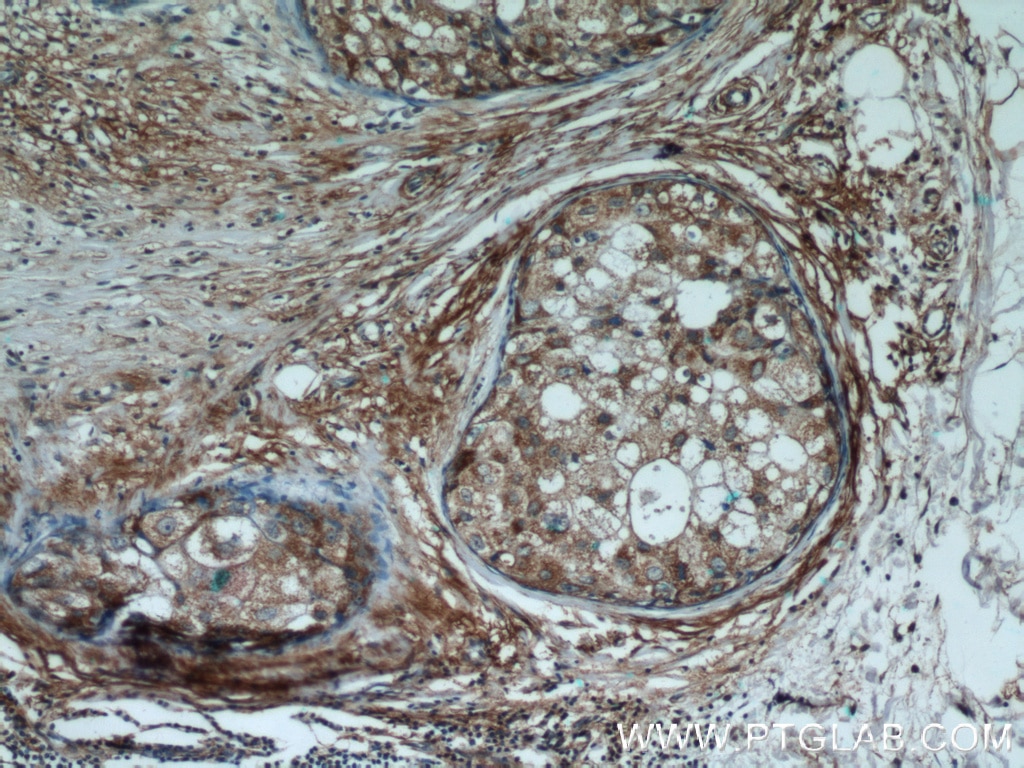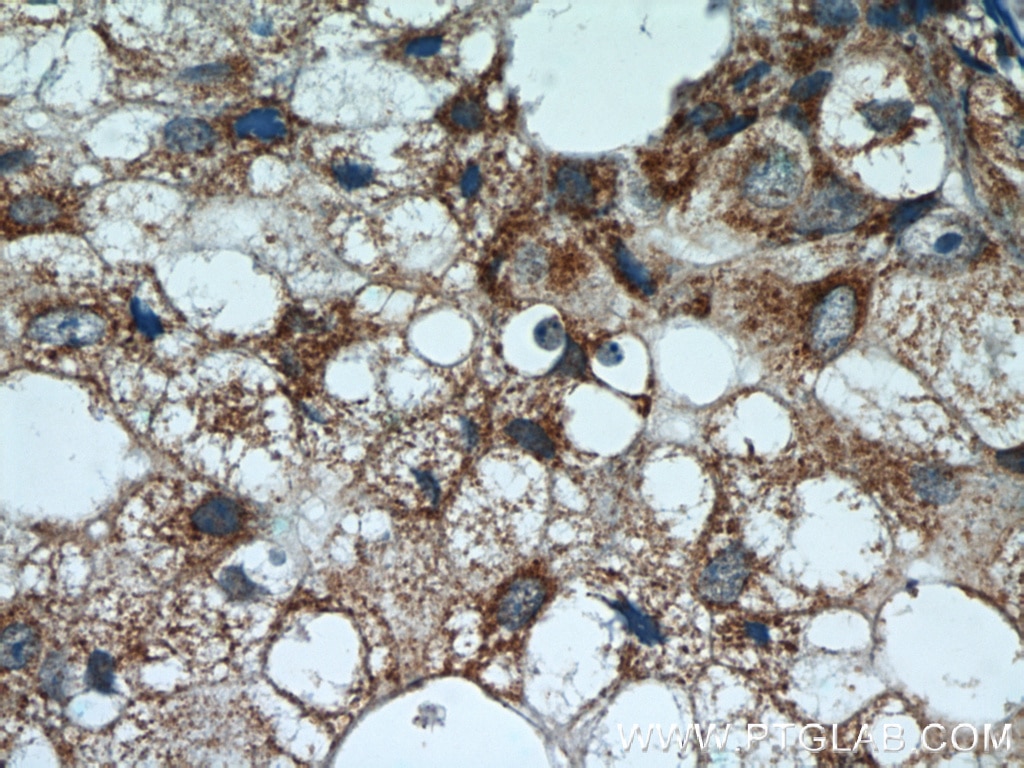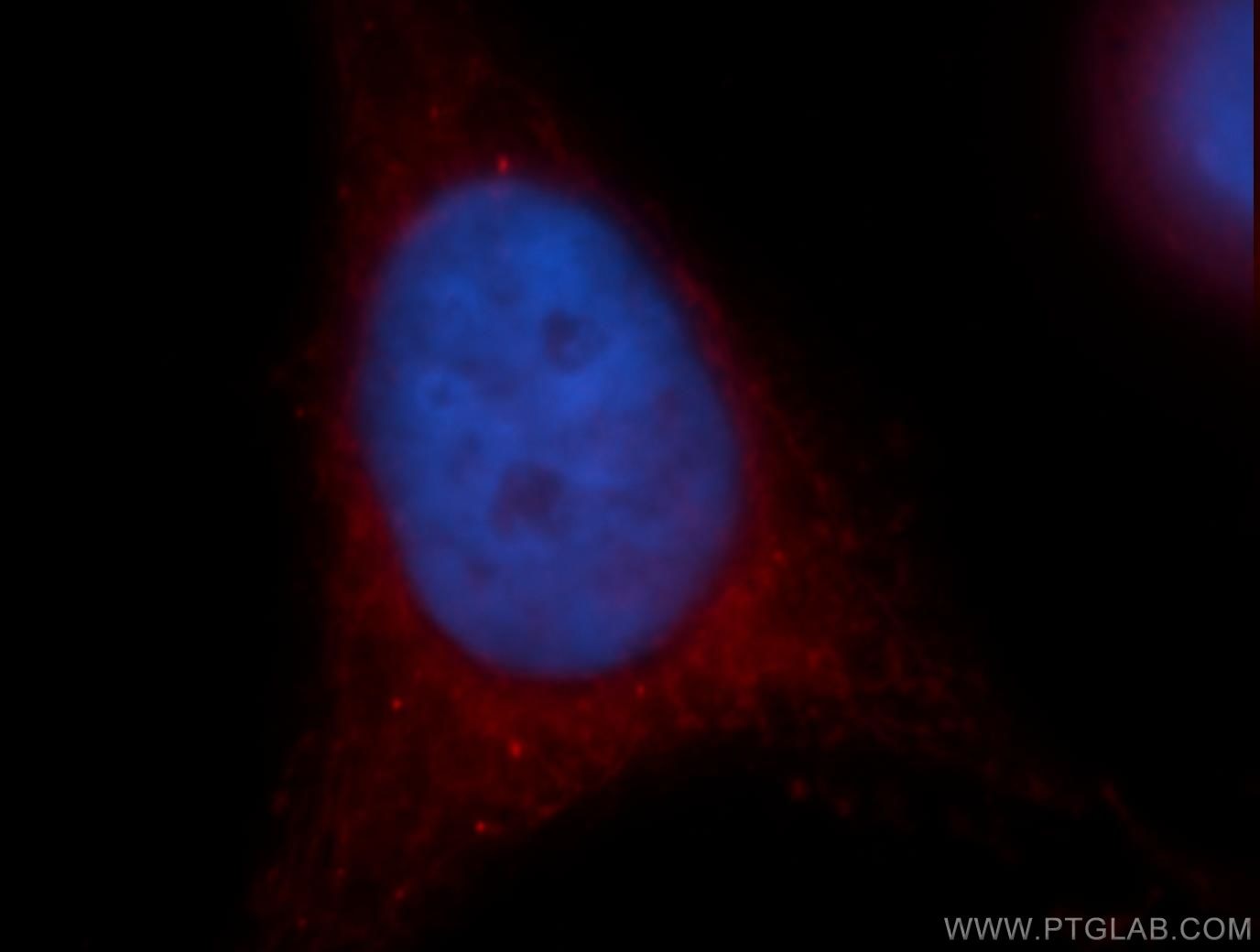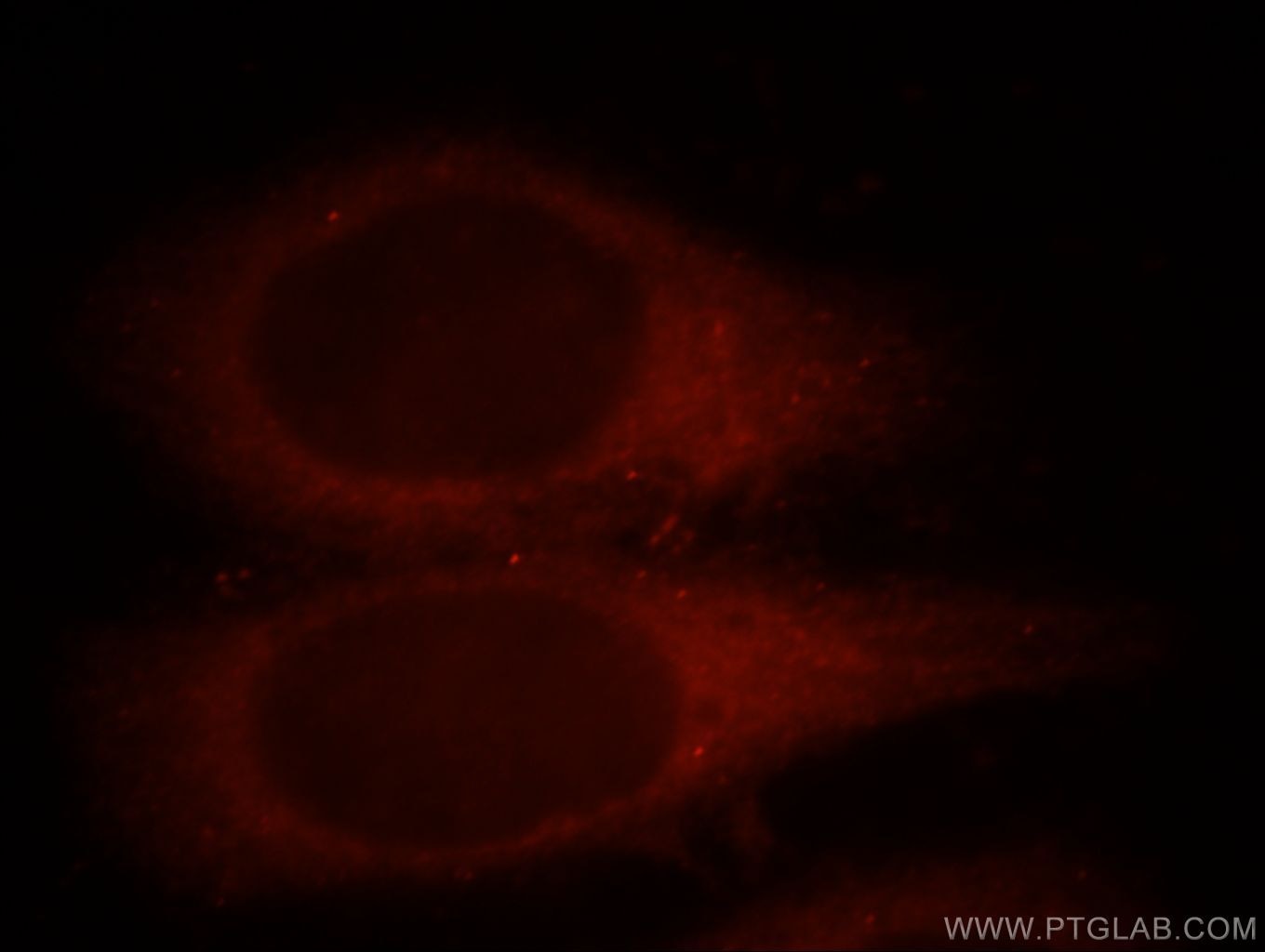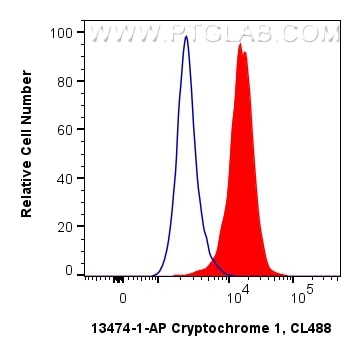- Phare
- Validé par KD/KO
Anticorps Polyclonal de lapin anti-Cryptochrome 1
Cryptochrome 1 Polyclonal Antibody for WB, IF, IHC, ELISA, FC (Intra)
Hôte / Isotype
Lapin / IgG
Réactivité testée
Humain, rat, souris
Applications
WB, IHC, IF/ICC, FC (Intra), CoIP, ELISA
Conjugaison
Non conjugué
N° de cat : 13474-1-AP
Synonymes
Galerie de données de validation
Applications testées
| Résultats positifs en WB | cellules HeLa, cellules Y79, tissu hépatique de rat, tissu hépatique de souris |
| Résultats positifs en IHC | tissu cérébral de souris, tissu de cancer du sein humain il est suggéré de démasquer l'antigène avec un tampon de TE buffer pH 9.0; (*) À défaut, 'le démasquage de l'antigène peut être 'effectué avec un tampon citrate pH 6,0. |
| Résultats positifs en IF/ICC | cellules HeLa, cellules MCF-7 |
| Résultats positifs en FC (Intra) | cellules HeLa |
| Résultats positifs en cytométrie | cellules HeLa |
Dilution recommandée
| Application | Dilution |
|---|---|
| Western Blot (WB) | WB : 1:1000-1:5000 |
| Immunohistochimie (IHC) | IHC : 1:50-1:500 |
| Immunofluorescence (IF)/ICC | IF/ICC : 1:10-1:100 |
| Flow Cytometry (FC) (INTRA) | FC (INTRA) : 0.40 ug per 10^6 cells in a 100 µl suspension |
| Flow Cytometry (FC) | FC : 0.40 ug per 10^6 cells in a 100 µl suspension |
| It is recommended that this reagent should be titrated in each testing system to obtain optimal results. | |
| Sample-dependent, check data in validation data gallery | |
Applications publiées
| KD/KO | See 2 publications below |
| WB | See 27 publications below |
| IF | See 2 publications below |
| CoIP | See 1 publications below |
Informations sur le produit
13474-1-AP cible Cryptochrome 1 dans les applications de WB, IHC, IF/ICC, FC (Intra), CoIP, ELISA et montre une réactivité avec des échantillons Humain, rat, souris
| Réactivité | Humain, rat, souris |
| Réactivité citée | rat, Humain, souris |
| Hôte / Isotype | Lapin / IgG |
| Clonalité | Polyclonal |
| Type | Anticorps |
| Immunogène | Cryptochrome 1 Protéine recombinante Ag4270 |
| Nom complet | cryptochrome 1 (photolyase-like) |
| Masse moléculaire calculée | 586 aa, 66 kDa |
| Poids moléculaire observé | 60-66 kDa |
| Numéro d’acquisition GenBank | BC030519 |
| Symbole du gène | CRY1 |
| Identification du gène (NCBI) | 1407 |
| Conjugaison | Non conjugué |
| Forme | Liquide |
| Méthode de purification | Purification par affinité contre l'antigène |
| Tampon de stockage | PBS avec azoture de sodium à 0,02 % et glycérol à 50 % pH 7,3 |
| Conditions de stockage | Stocker à -20°C. Stable pendant un an après l'expédition. L'aliquotage n'est pas nécessaire pour le stockage à -20oC Les 20ul contiennent 0,1% de BSA. |
Informations générales
Cryptochrome circadian clock 1 (CRY1) is a flavin adenine dinucleotide-binding protein with MW of 66 kDa. CRY1 is a key component of the circadian core oscillator complex, which regulates the circadian clock. CRY1 predominantly displays evening-time expression and serves as a strong repressor of morning-time elements (E box/E-prime box) when bound to the BMAL1 (ARNTL; 602550)/CLOCK (601851) complex (PubMed: 21236481). This antibody can recognize CRY1 and CRY2 due to the high homology.
Protocole
| Product Specific Protocols | |
|---|---|
| WB protocol for Cryptochrome 1 antibody 13474-1-AP | Download protocol |
| IHC protocol for Cryptochrome 1 antibody 13474-1-AP | Download protocol |
| IF protocol for Cryptochrome 1 antibody 13474-1-AP | Download protocol |
| FC protocol for Cryptochrome 1 antibody 13474-1-AP | Download protocol |
| Standard Protocols | |
|---|---|
| Click here to view our Standard Protocols |
Publications
| Species | Application | Title |
|---|---|---|
Sci Total Environ Metastatic effects of perfluorooctanoic acid (PFOA) on Drosophila melanogaster with metabolic reprogramming and dysrhythmia in a multigenerational exposure scenario | ||
Theranostics Development of human cartilage circadian rhythm in a stem cell-chondrogenesis model. | ||
Stem Cell Reports SCA1(+) Cells from the Heart Possess a Molecular Circadian Clock and Display Circadian Oscillations in Cellular Functions. | ||
Biochem Pharmacol CRY1/2 regulate rhythmic CYP2A5 in mouse liver through repression of E4BP4
|
Avis
The reviews below have been submitted by verified Proteintech customers who received an incentive forproviding their feedback.
FH Priya (Verified Customer) (01-11-2023) | I have used this for Human cardiomyocytes cell line and mice skin, and liver tissues
|
FH Iru (Verified Customer) (06-26-2020) | It works fine in 1:1000.
|
